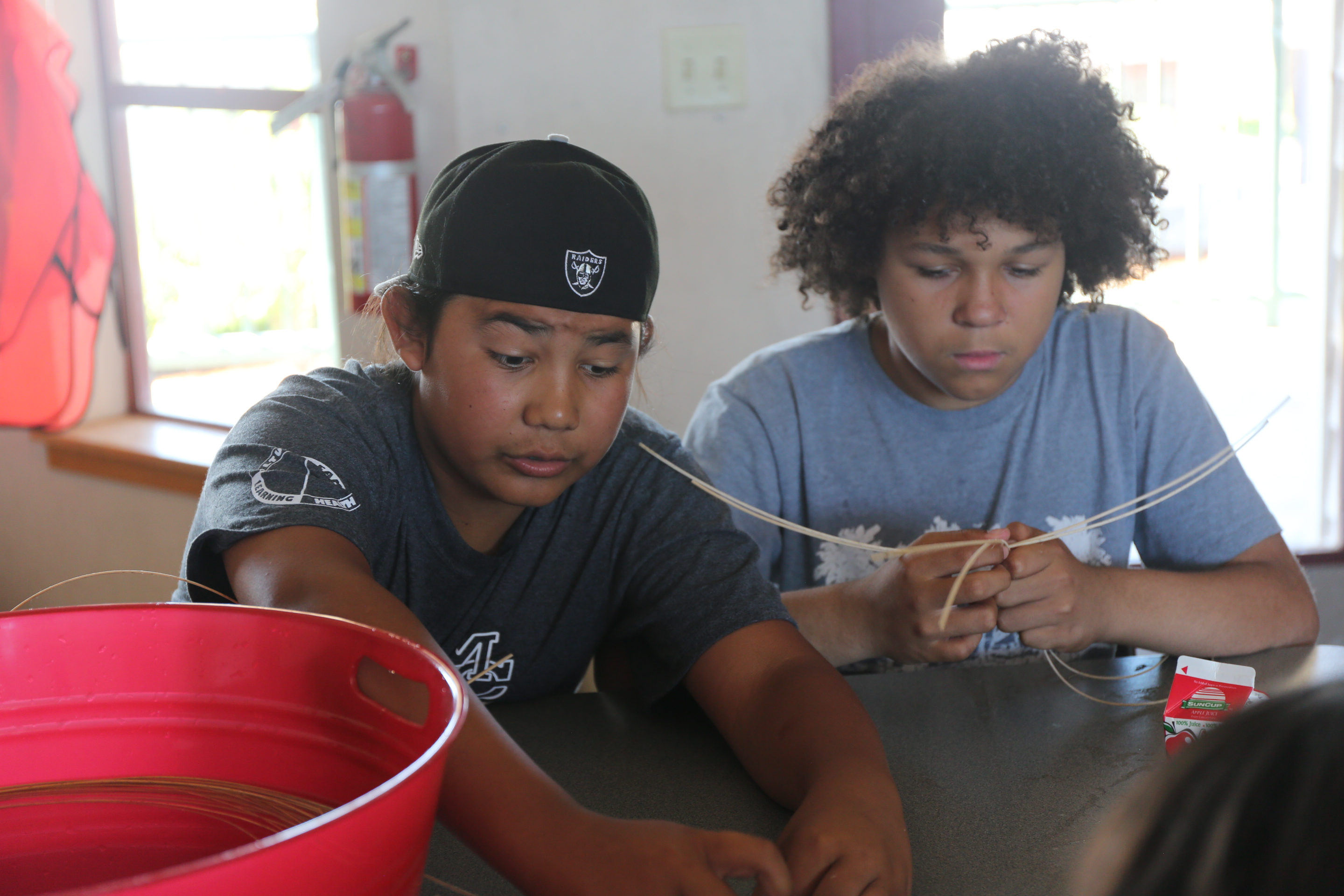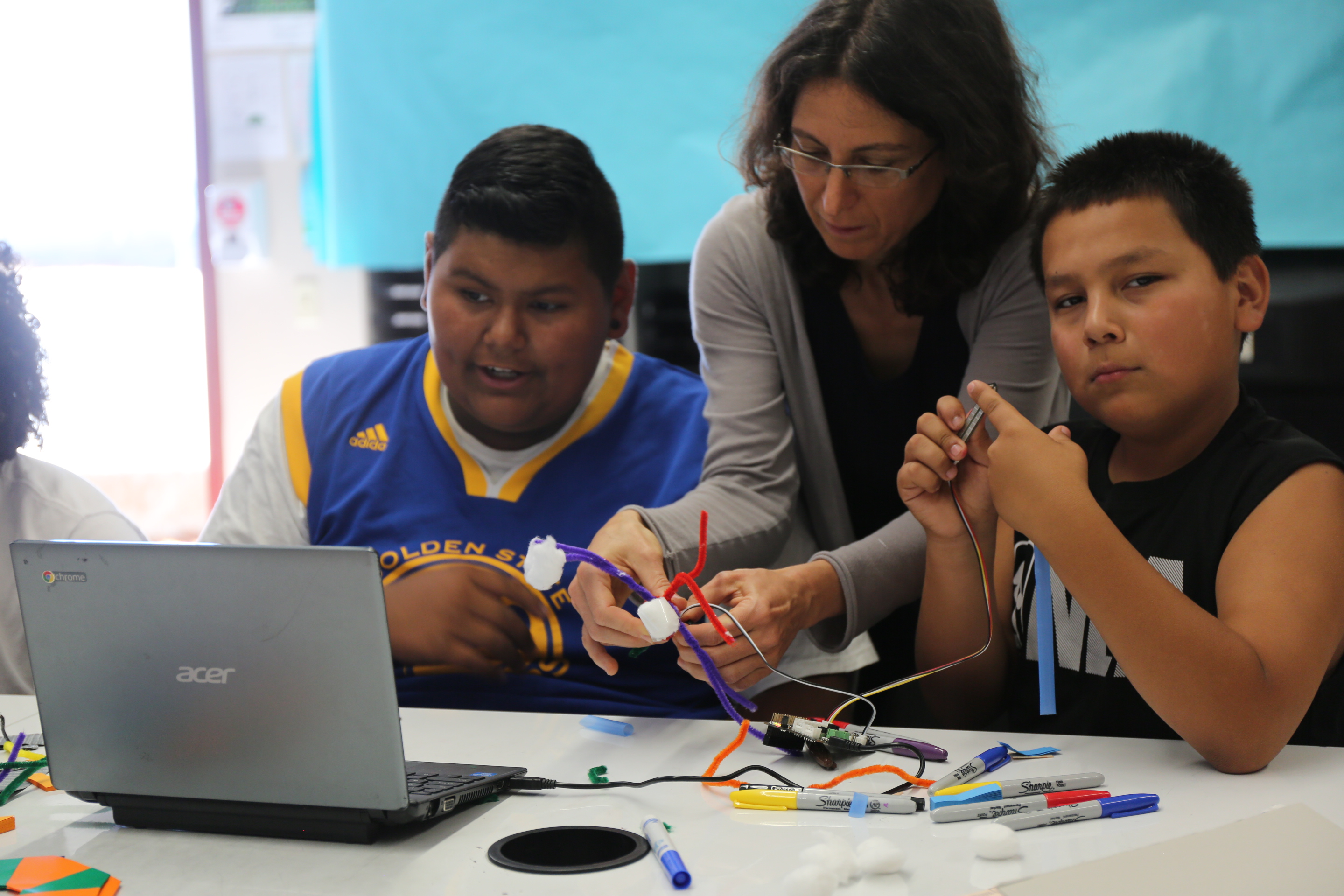By Tamara Straus
For the Pinoleville Pomo Nation of Ukiah, California, collaboration has not historically been a word used to describe interactions with white Americans. As late as 1950, native people were not permitted to walk on both sides of the street and signs in Ukiah’s storefront windows read, “No dogs or Indians allowed.”
Angela James, vice chair of the Tribal Council for the Pinoleville Pomo Nation, remembered this history was she was approached by David Edmunds, her tribe’s environmental director, about a possible collaboration with UC Berkeley. The goal was to co-design a sustainable housing project for the low-income families of her 300-person nation.
 On the one hand, James, a mother of four, was eager to advance the education of young tribe members and teach them to live in two cultures. Yet her mind jangled with stories from her grandfather Smith Williams. He had told her about Ba-lay Ba-lin—the Bloody Run—an 1871 atrocity in which white settlers violently forced Native Americans off their land, turning the Eel River red with their blood. In 2007, when James first stepped onto the UC Berkeley campus to talk with Mechanical Engineering Professor Alice Agogino, now education director of the Blum Center and chair of the graduate group in Development Engineering, and graduate students Ryan Shelby and Yael Perez, she was aware that this was the place where Ishi, the so-called “last wild Indian,” became the research subject of anthropologist Alfred Kroeber. She also knew there was an ongoing dispute about the Hearst Museum’s return of 12,000 Native American remains to California tribes.
On the one hand, James, a mother of four, was eager to advance the education of young tribe members and teach them to live in two cultures. Yet her mind jangled with stories from her grandfather Smith Williams. He had told her about Ba-lay Ba-lin—the Bloody Run—an 1871 atrocity in which white settlers violently forced Native Americans off their land, turning the Eel River red with their blood. In 2007, when James first stepped onto the UC Berkeley campus to talk with Mechanical Engineering Professor Alice Agogino, now education director of the Blum Center and chair of the graduate group in Development Engineering, and graduate students Ryan Shelby and Yael Perez, she was aware that this was the place where Ishi, the so-called “last wild Indian,” became the research subject of anthropologist Alfred Kroeber. She also knew there was an ongoing dispute about the Hearst Museum’s return of 12,000 Native American remains to California tribes.
James’ warm-up to the UC Berkeley engineers was slow. She recounted that because Shelby is African American and Perez is foreign (Israeli), she felt they might be worthy of her community’s trust. She also wanted to believe that “science can cross cultural barriers,” and she observed from Agogino’s classroom that engineering was no longer “just a field for white males.”
At the same time, the interdisciplinary UC Berkeley group called CARES—Community Assessment of Renewable Energy and Sustainability—was seeking to tread new water in the field of development. “As we worked with the nation on the sustainable housing project, our understanding of development changed,” said Perez. “We realized technology, and technological ‘fixes,’ are not enough. We needed to start with what sustainability meant to the tribe. And they had a lot to say about sustainability, because of the way they view their connection to the Earth—resulting in unexpected design decisions around heating, water use, solar power, and the shape and functionality of their homes.”
This insight about collaboration led the CARES group to a development methodology called “co-design.” The term, which builds on human-centered design, user-centered design, design thinking, and participatory design, goes further in empowering stakeholders in the decision making and design process to recognize that users (or locals or recipients of development assistance) are key participants in their own economic, environmental, and sociopolitical advancement, with significant contributions to offer. In essence, CARES, a forerunner of UC Berkeley’s development engineering graduate program, embraced co-design to address the disconnect between the creation of technological innovations by engineers and the needs, preferences, and cultural views of the people who will use them.
Explains Agogino, “The 10-year collaboration with the Pinoleville Pomo Nation shows a number of things: It shows that development projects can and should be local, not just international. And it shows that development solutions can range from how we design to how we publish academic research. The journal articles that have come out of the PPN collaboration have notably been co-authored by PPN members.”
Since 2008, CARES has collaborated with the Pinoleville Pomo Nation on engineering, architecture, and educational projects that have tested the boundaries of development. Co-designed results have included sustainable housing, renewable energy power systems, water restoration and management projects, and most recently science, technology, engineering, art, and math (STEAM) workshops for middle and high school students and a K-12 maker space.
 Like past collaborations, the recent educational one was the result of shared interests and available funding. Zhao Qui, project director of the Pomo Youth College and Career Success Project, explains that in October 2016 her organization received a Department of Education grant to fund new cultural and academic enrichment activities for native students; one area of concern was low access and achievement in math and science. At around the same time, the Blum Center received funding from the National Science Foundation to support development engineering students working on InFEWS (Innovations at the Nexus of Food, Energy, and Water Systems) for low-income communities facing extreme challenges. And the CARES team, energized by development engineering graduate students and Global Poverty & Practice (GPP) undergraduate students, was ready for a new collaboration.
Like past collaborations, the recent educational one was the result of shared interests and available funding. Zhao Qui, project director of the Pomo Youth College and Career Success Project, explains that in October 2016 her organization received a Department of Education grant to fund new cultural and academic enrichment activities for native students; one area of concern was low access and achievement in math and science. At around the same time, the Blum Center received funding from the National Science Foundation to support development engineering students working on InFEWS (Innovations at the Nexus of Food, Energy, and Water Systems) for low-income communities facing extreme challenges. And the CARES team, energized by development engineering graduate students and Global Poverty & Practice (GPP) undergraduate students, was ready for a new collaboration.
The task for the co-design was to integrate native activities and sensibilities into STEM education. Says George Moore, a UC Berkeley mechanical and development engineering graduate student, who taught at the summer workshop, “It became clear in conversations with the PPN that it was hard to get the native students to apply themselves in the STEM disciplines. Institutionally, it just wasn’t structured for them. But these students got really engaged at the workshops and are really good at math and science.”
According to Moore—and other participating UC Berkeley students, including GPP students Dor Chavoinik, Grace Harrison, and Arielle Levin and Elena Duran, a PhD student in Graduate Group in Science and Mathematics Education—what works best is listening and not imposing views on what works in a STEM-based activities. Among the decisions were to teach engineering design through Pomo Pinoleville basket-making techniques and to engage students in 3D printing designs from local art and nature.
Qui says the workshops and maker space are generating excitement among the students to get into STEM fields. “We have a college career counselor coming to the classroom,” she notes. “The students have a sense these are high paying jobs. Yet for native people, we’re not just looking at the pay. We’re looking at how we can use the STEM program to serve our own community around solar power, rain catchment, and other sustainable and environmental solutions.”
For graduate student Pierce Gordon, the co-design approach is crucial for mechanical/development engineers like himself working in poor communities. Gordon says co-design is “de-colonizing,” as it simultaneously aware of the deep history of technological interventions and adamant that everyone be heard, understood, and acknowledged. Continues Gordon, “If we don’t do that, then we’re doing the very similar kind of harm that many people have done over the history of international development and interventionist work as a whole.”
Gordon, who is finishing his PhD dissertation, which includes case studies of co-design efforts in the United States and Botswana, says the first priority of development engineering work is not to get research publications, funding, or material for teaching classes, but to benefit marginalized communities. “It is to figure out what the community wants, because this research moves at the speed of trust. Once you build up that trust, you have the opportunity to build up to collaborations and research outcomes and beneficial activities that you didn’t even know could have existed.”
For Angela James, one very specific outcome of the 10-year collaboration is her children’s interest in STEM. “My daughter has been a participant in CARES since she was four. She’s 14 now. She’s very comfortable leaving Ukiah. She’s looking at a lot of different colleges. All her career interests are science-based. My son is right behind her and just the same.”
James, who was on the UC Berkeley campus on July 13, 2018 with a group of Native American high school students, says the days of cultural and educational isolation can end for her tribe and others in California. “My goal has been to open the minds of our youth and introduce them to college and science, and teach them how to build positive working relationships with people outside their immediate circle,” says James. “It is important that the university has the right individuals involved in a collaboration—people who are willing to advocate for the human approach, get to know the individuals, and ask about background and culture. An important part of this collaboration has been that our voice is finally being heard.”
Research about this collaboration was partially supported by the National Science Foundation’s Research Traineeship in Innovations at the Nexus in Food, Energy, and Water Systems (Award No. 1633740).
